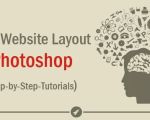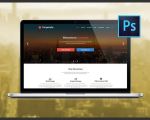What is Website UI Design?
Website UI design, short for "User Interface design," is the process of designing the layout and interactive elements of a website, focusing on how users interact with the site. It involves creating visually appealing, user-friendly interfaces that ensure an optimal experience. The goal is to make sure that users can easily navigate the site, understand its purpose, and accomplish their objectives without frustration. UI design plays a critical role in determining the success of a website, as it directly impacts user satisfaction, retention, and conversion rates.
1. The Importance of UI Design in Website Development
UI design is one of the most essential aspects of website development, and its importance cannot be overstated. A well-designed website interface leads to an enhanced user experience, while a poorly designed one can lead to confusion, frustration, and even abandonment. Think about it—when you visit a website, the first thing you notice is the design, and it can either draw you in or push you away. A good UI design is clean, visually engaging, and easy to use. It can be the difference between a visitor converting into a customer or leaving in frustration.
In my experience, it’s not just about looking pretty. It’s about ensuring that every clickable element works intuitively and that the design supports the website’s functionality. For example, when I started working on the UI design for an e-commerce platform, I spent time ensuring that product images were displayed clearly, the navigation menu was simple, and users could easily find what they were looking for. This attention to detail helped improve the overall user experience, leading to higher engagement and increased sales.
2. Key Components of UI Design
UI design encompasses a wide range of elements that need to be thoughtfully integrated into the website. Some of the most crucial components of UI design include:
- Layout: The layout refers to how content and elements are organized on the page. A clean, well-organized layout helps users quickly find information.
- Typography: Choosing the right fonts and making sure the text is legible is a fundamental part of UI design. Good typography improves readability and guides the user’s attention.
- Color scheme: Colors set the mood and tone of a website. A well-chosen color palette can make the website look professional and appealing, while poorly chosen colors can create a confusing experience.
- Buttons and links: These elements must be clearly visible and easy to interact with. The design should indicate their functionality, guiding users to take action.
- Forms: Forms are used for various actions, such as signing up, subscribing to a newsletter, or making a purchase. Properly designed forms ensure that users can easily input their data without errors.
- Navigation: Clear and intuitive navigation is vital for helping users easily find their way around the website. Well-structured menus and search functions improve the overall experience.
3. Best Practices for Effective UI Design
Effective UI design is not just about choosing the right components, but also about ensuring that the website is functional, accessible, and visually appealing. Here are some best practices for creating a top-notch UI design:
- Simplicity: A cluttered website with too many options can overwhelm users. Keeping things simple, with a focus on what matters, helps users find what they need faster.
- Consistency: Consistent use of colors, fonts, and layout creates a cohesive design that makes navigation intuitive.
- Mobile-first design: More and more users are browsing websites on mobile devices. Designing for mobile first ensures that the website works seamlessly across all devices.
- Feedback: Providing users with feedback when they interact with elements on the page (like hovering over a button or submitting a form) reassures them that their actions are being recognized.
- Testing: Constant testing is key to improving UI design. Testing different versions (A/B testing) can help determine what design elements perform best with users.
4. The Role of UX and UI Design Together
While UI design focuses on the look and feel of the website, UX design (User Experience) focuses on the overall experience of the user, ensuring that the website is not only attractive but also functional and easy to navigate. In my career, I’ve found that a strong UI design often stems from collaboration with UX designers. The two should work in tandem to create an experience that is not only visually appealing but also user-friendly.
For example, when designing a website for a client, I worked closely with the UX team to determine the user’s journey. We ensured that every step, from landing on the homepage to completing a purchase, was seamless. UI elements like call-to-action buttons, product images, and reviews were carefully placed to make the journey as efficient as possible, while the UX team made sure that users could navigate the website without feeling lost or frustrated.
5. Common Mistakes in Website UI Design
Even seasoned designers can make mistakes when designing websites. Some common mistakes in UI design include:
- Overcomplicating the design: Adding too many elements or complex features can distract and confuse users.
- Not prioritizing mobile design: With mobile traffic increasing, it’s essential to ensure the website is mobile-friendly. A design that doesn’t work well on mobile can drive users away.
- Ineffective navigation: If users can’t find what they’re looking for quickly, they’ll leave the website. Ensuring that menus and search functions are intuitive is key.
- Ignoring accessibility: A website should be accessible to everyone, including people with disabilities. This means considering things like color contrast and keyboard navigation.
6. How to Learn and Improve Your UI Design Skills
Whether you’re a beginner or an experienced designer, there are always ways to improve your UI design skills. In my journey as a web designer, I’ve learned a lot through practice, feedback, and continued education. Here are some ways to enhance your skills:
- Online courses: Websites like Coursera, Udemy, and Skillshare offer great courses on UI design, where you can learn from industry professionals.
- Follow design blogs and websites: Stay updated with trends by following popular design blogs like Smashing Magazine, A List Apart, and Designmodo.
- Join design communities: Engaging in forums and communities like Dribbble and Behance can help you get feedback on your designs and stay inspired.
- Practice, practice, practice: The more you design, the better you’ll get. Start with personal projects or volunteer work to build a solid portfolio.
UI design is a critical component of creating successful websites. Whether you’re just starting your journey or you’re looking to refine your skills, understanding the basics of good UI design is essential for building websites that users love to interact with.
If you're looking for more tips and resources to improve your website design, be sure to check out SitePoint 24 for the latest tools and expert advice.
SEO Title: What is Website UI Design and Why It Matters SEO Keywords: website UI design, importance of UI design, UI design best practices, UI design tips, user interface design SEO Description: Discover what website UI design is and how it affects user experience. Learn best practices and common mistakes in UI design.







